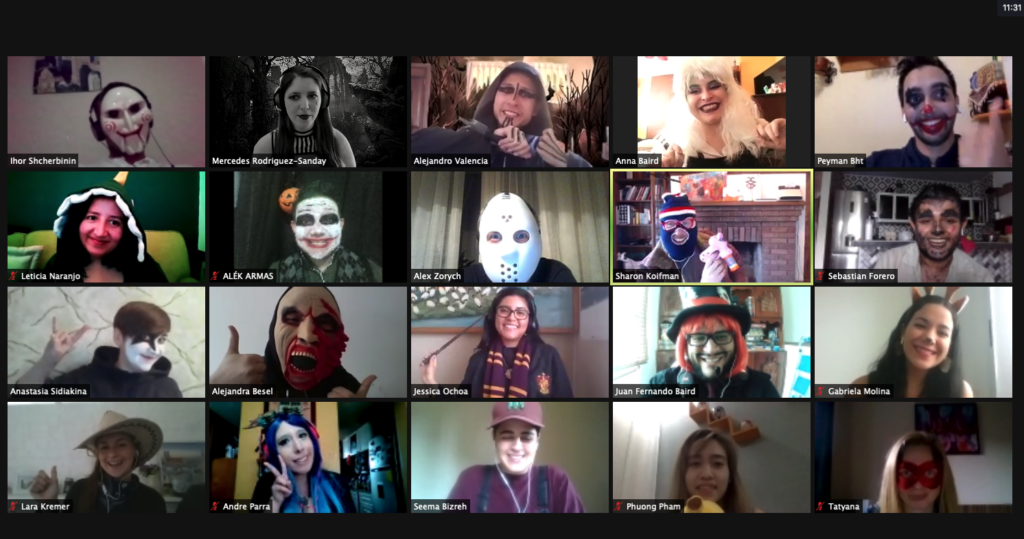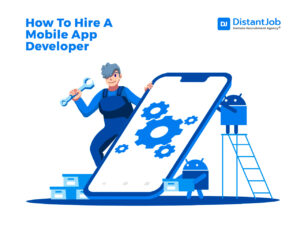One of the benefits of traveling around the globe is getting to know different cultures and mindsets. Most of us love trying new dishes and experiencing new adventures in completely diverse landscapes. When we travel, we expand our minds; we realize there are things bigger than ourselves. Culture and diversity are part of our DNA because we live in a world where each one of us is different. Just look at our fingerprints. The business world isn’t excluded from this. Encouraging workplace diversity and inclusion allows companies to reach a new level of creativity and innovation. If two minds think better than one, imagine two minds with completely different ideas.
However, it often happens that embracing diversity and inclusion is easier said than done. Over this article, we will explore the meaning of both concepts and the best practices that will help companies make their workplace a better place.
Is Inclusion the Same as Diversity?
Let’s play a game. Below you’ll see a brief example involving two companies; try guessing which one is diverse and which one is inclusive, or both. (No cheating!)
Company A: This is a remote company with employees from 10 different countries. When hiring, they don’t mind about an employee’s background or culture; they only care that candidates are a good fit.
Company B: This is a Canadian company with 100 employees. Only 20% of its employees are from outside Canada. The company has monthly meetings to discuss how each employee feels, and they continuously bring strategies to make everyone in the different areas feel listened to and valued.
Company A is the perfect example of a diverse company, but it’s not clear if it’s inclusive or not. In comparison, company B is inclusive, yet, not diverse.
When it comes to what diversity and inclusion mean we can highlight some differences. Inclusion refers to the strategies organizations create to make everyone feel integrated, despite their differences. The goal of inclusion is to make employees feel accepted and encouraged to share their opinions and ideas. On the other hand, diversity refers to employees’ variation regarding physical and social characteristics such as gender, age, education, ethnicity, etc.
In the previous example, company B is inclusive because it cares that everyone feels integrated. However, the company is mostly homogeneous, while company A has employees from different backgrounds, making it diverse.
Advantages of Diversity and Inclusion in the Workplace
Companies that integrate both concepts and strive to embrace diversity and inclusion tend to have far larger benefits than those that don’t. These are the main advantages:
1. Bigger pool of talent
When companies look in the same areas every time they need to fill in a position, they get the same results. However, when companies decide to broaden their search in other locations and look for employees from different backgrounds and cultures, their talent pool increases significantly, giving them the possibility of finding better candidates.
2. Innovation and creativity
Homogeneous teams have smoother communication because they can draw upon shared cultural analogies. But, despite working in sync and having great ideas, they often lack innovation. On the other hand, heterogeneous teams hold different personalities, cultures, and backgrounds that, with the right leadership, make teams experience a kind of healthy conflict in the workplace that defies employees to get creative and think outside the box.
3. Higher profits
When teams are continually thinking of new ways to innovate, have different ideas and debates, the results can be gratifying for businesses. A study by Harvard Business Review revealed that more diverse companies had 19% higher innovation revenues.
4. Employee engagement
One of the key strategies for employees to engage with their jobs is not only having high salaries but a great culture. Diverse and inclusive companies, by definition, offer employees a place to be heard and where differences are not only accepted but encouraged. This leads them to feel valued and happy with their workplace, increasing employee retention. Research conducted by Deloitte, in which 1,550 employees were interviewed, proved that engagement directly results from diversity and inclusion in the workplace environment.
5. Better performance
Companies characterized by having diverse and inclusive environments are likely to solve problems faster and effectively. When employees come from diverse backgrounds, it’s common that they bring more solutions to the table. This leads teams to put their perspectives together and make informed and objective decisions considering all different opinions.
Diversity and Inclusion Best Practices in 2021
How to promote diversity and inclusion in the workplace? Is it real or do companies just say it to look good?

At DistantJob, a remote recruitment agency that provides remote worker staffing and awesome HR services for companies seeking to improve and expand their remote work operations, we have encouraged workplace diversity and inclusion since forever. Our company is characterized by having employees from entirely different backgrounds. Here are some fun facts about us:
- Our youngest employee is 20 years old, and the oldest (sorry we can’t say, it’s confidential).
- Where are we located? Our company has distributed employees in Canada, Thailand, Ecuador, Colombia, Argentina, Romania, Portugal, Ukraine, and the United States (and we keep expanding).
- We have employees that are part of the LGTB+ community.
- We are a gender-equal company, with almost the same number of women and men through the departments.
If you want to know how to increase diversity and inclusion in the workplace, today is your lucky day because I will share with you some of our secrets. As a successful company that embraces workplace diversity and inclusion, these are our three main lessons:
Lesson #1: Hire Remotely
We are a fully remote company, and we encourage other businesses to give themselves the opportunity of hiring remote employees as well. Why? Because of all the benefits for both employees and employers. Not only do you have access to the world’s top talent, but you save money, and your employees are happier. However, taking these significant benefits aside, when you hire virtual employees from different parts of the world, you automatically promote diversity.
You are welcoming into your team people with innovative and different ideas than those teams whose members have similar mindsets and backgrounds.
Tips to hire remote employees successfully:
- Define if you want for example a full-time virtual programmer or a freelancer.
- Set up a recruitment strategy depending on the type of candidate you want to find. For example, if it’s a freelancer, make sure you look at popular freelancing sites such as PeoplePerHour, Upwork, Fiverr. If it’s a full-time remote employee, you could post the job description on job boards, headhunt candidates on social media, or get the help of recruitment professionals like us.
- Have an interview strategy as well: Not everyone is suited for remote work. Make sure candidates have the necessary skills to be successful remote workers. For example, communication abilities, self-reliance, time management, remote work experience is desirable as well.
- Create a strong onboarding process that allows new employees to understand more about your company and how you work.
Lesson #2: Don’t Manage, Lead
Do you know what the difference between leading and managing is?
According to the Harvard Business Review, the difference between management and leadership relies on each concept’s objective.
Management seeks to control a group of people to accomplish certain goals and results. On the other hand, leadership refers to the ability to influence, motivate, and encourage others to contribute toward organizational success.
Not that leaders don’t want to achieve goals and results, but it’s in the ‘how’ that these two concepts differ. There are different types of management, but commonly they characterize by building processes and plans to achieve those results. Leadership enables teams to be creative and think of new – better ways to achieve those results. There might be a path, but there’s always room for innovation and improvement.
Workplace diversity and inclusion are possible when leaders can see beyond a person’s skin color or beliefs but see their potential, appreciate their differences, and encourage them to grow. Leadership is all about caring and making every single person in a company feel valued for what they do.
Tips for becoming a better virtual leader based on practical experience:
- Always listen to your employees.
- Encourage creativity in your company by arranging meetings to discuss projects and ways to reach certain goals.
- Care about your team. Small gestures make big differences – ask them how they are doing or if they need something.
- Encourage mentorship
- Lead by example
Lesson #3: Prioritize in Building a Healthy Culture
Culture seems to be the buzzword these days, but for a good reason. When companies don’t prioritize building a culture, employees find themselves lost in despair. Just kidding, but it’s a fact that what makes employees engaged and committed to a company is culture.
A research study conducted last year by Speakap found out that 76% of American workers consider company culture an important satisfaction factor.
Culture is not trying to imitate what business textbooks or courses say. As I explain in my book, Surviving Remote Work, culture is about connection. One of the biggest lessons I’ve learned in these past years as a remote leader is that employee engagement is impossible without connection. They need to feel connected to one another and valued. How to do this? By caring.
As stated at the beginning of the article, diversity and inclusion are when teams are made up of different mindsets and backgrounds and feel part of a company. The best part of this is that building culture is fun and brings valuable lessons. For example, encouraging teamwork is a must, and you can do this not only by giving pep talks but also by doing fun activities with your team. For example, beer pong contests or coffee dates once a while. If you are in a remote team, you could do virtual pizza night or video gaming day.
Tips for building a healthy culture:
- Have constant feedback meetings with employees to see how they are doing. Feedback meetings are great for connecting with employees and learning more from them.
- Make company activities such as celebrating birthdays or special holidays.
- Appreciate and recognize the hard work of employees.
- Make everyone in the company understand why their work matters. The goal is always beyond the results, remember why you started your company and transmit that message to your team.
- Promote healthy discussion of different views during team meetings making sure everyone participates.
Ready to Succeed?
It’s normal to hire people with similar mindsets to ours; it’s part of our unconscious bias. However, realizing the benefits of hiring people from different cultures with different ideas is a game-changer. Thriving in a business is about constantly innovating and adapting to the world’s changes, and with this new remote work era, diversity is no longer an option. It is a reality.





